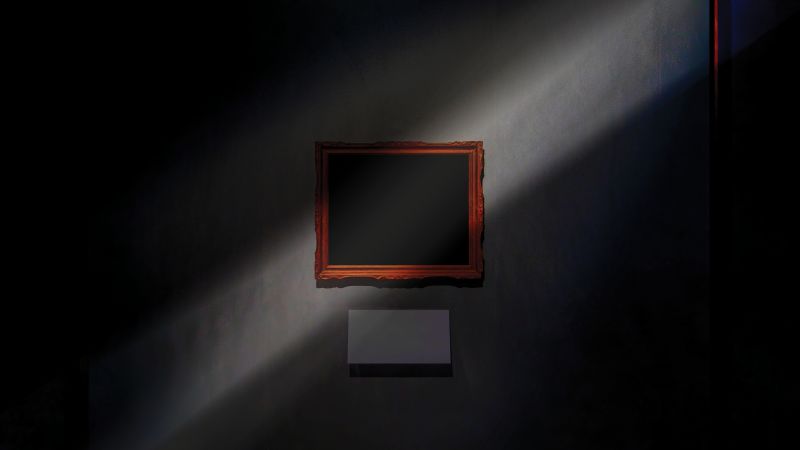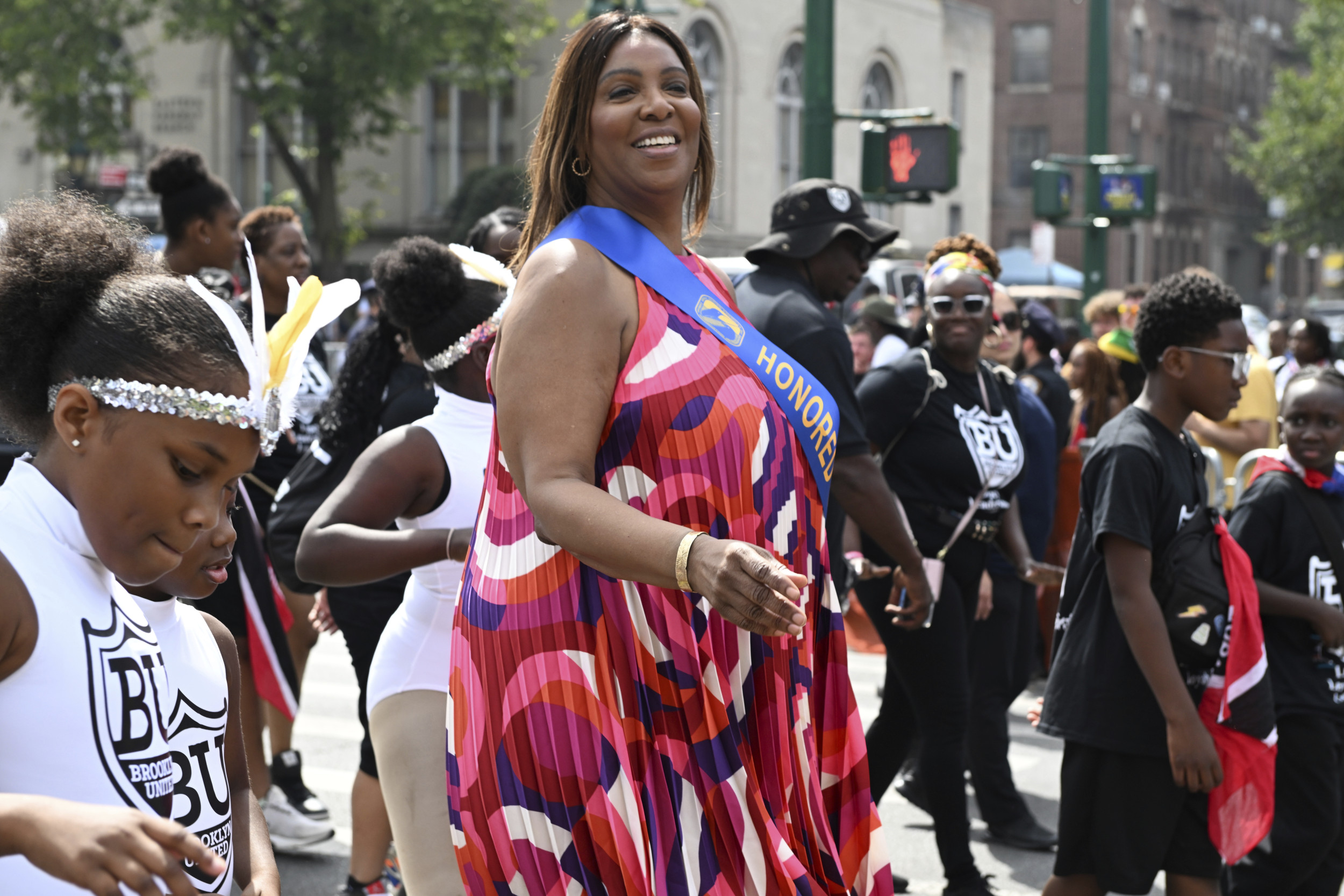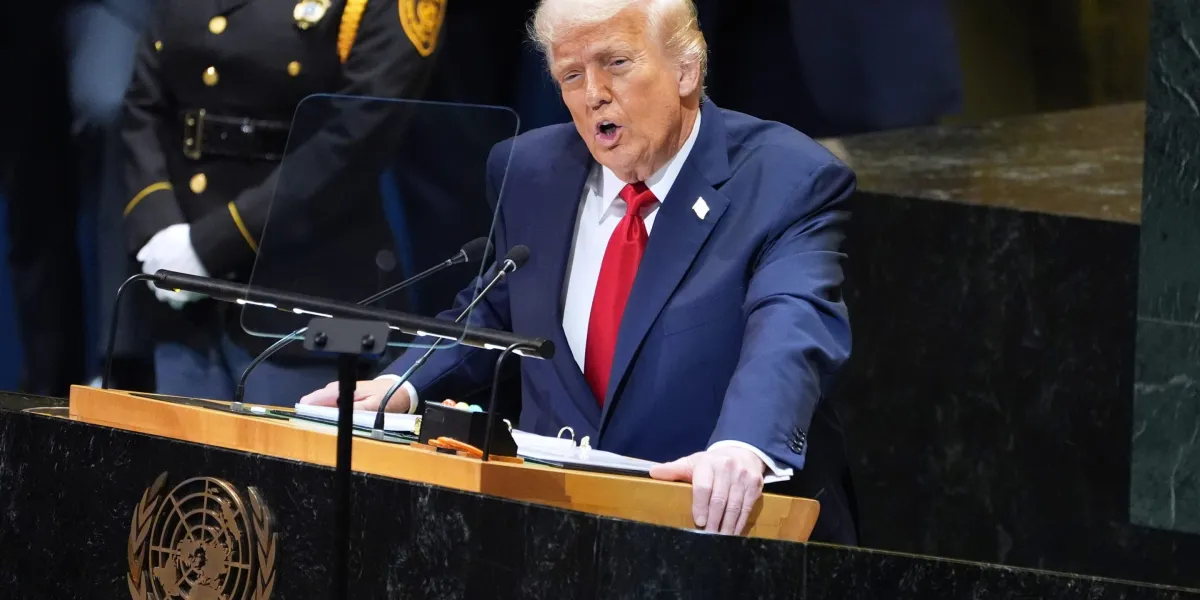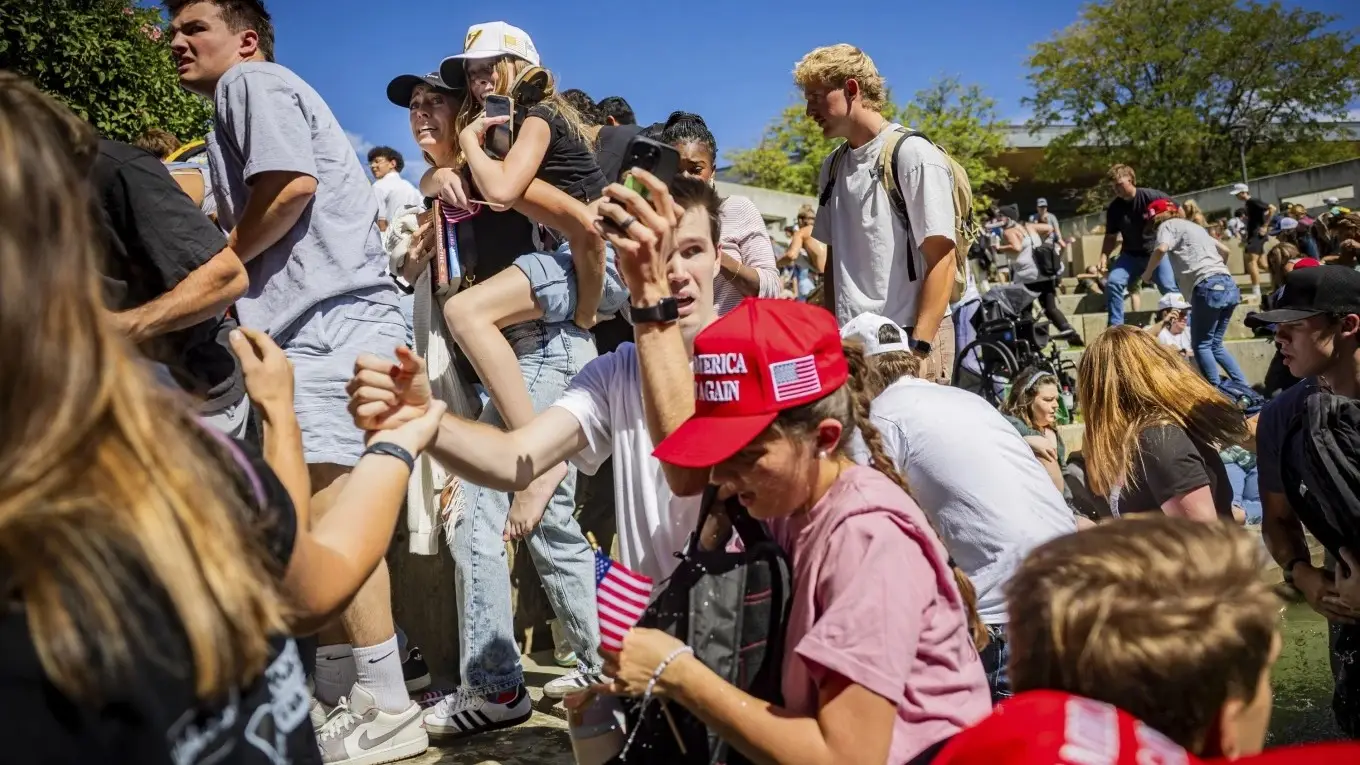
When Amy Sherald, one of the United States’ foremost contemporary painters, canceled a major exhibition of her work at the Smithsonian’s National Portrait Gallery in July, it sent shockwaves through the art world.
The decision followed a dispute with curators over how to display a painting that reimagined the Statue of Liberty as a Black, trans woman. Sherald cited censorship, which she later claimed in an op-ed had “taken hold” of the federally funded Smithsonian, cautioning that “history shows us” what happens when governments demand loyalty from cultural institutions.
Sherald’s cancelation is just one warning sign of strife at the Smithsonian as the Trump administration takes unprecedented steps to tighten its grip over the eminent museum network. Aiming to eradicate “improper ideology” from its walls, per an executive order in March, the administration has taken aim at displays involving race and gender; called for the National Portrait Gallery’s director to be fired (she subsequently resigned); and launched a review of exhibitions to ensure they follow the president’s directive to “celebrate American exceptionalism,” demanding that the Smithsonian hand over gallery labels, information on future exhibitions and internal communications on artwork selection. The institution has responded by assembling a team to address the administration’s requests.
The American Alliance of Museums (AAM) is among those concerned that the threat of interference stretches far beyond Washington, DC. On August 15, three days after President Donald Trump announced his administration’s review, the group issued a statement warning of growing “threats of censorship against US museums,” describing “increasing external pressures to modify, remove, or limit exhibitions and programs.”
Days later, Trump took to his social media platform, Truth Social, to call museums nationwide “the last remaining segment of ‘WOKE,’” adding that — following his systematic targeting of universities — his attorneys would focus on museums next. Like universities, many American art institutions benefit from federal funding, and the Trump administration has gutted agencies that support them (and museums more broadly), with grants worth tens of millions of dollars denied or rescinded as a result.
Despite a growing sense of unease, museum leaders across the country have largely remained silent. CNN sought comment from more than a dozen museum directors and other arts leaders, and those who responded spoke to a hush over the field as institutions avoid attention and, in some cases, self-censor exhibitions or programs that could provoke federal ire. Most, however, failed to respond or declined to comment.
“You have some really prime examples of disappointing museum leadership — museums that are deciding that being stealthy and risk-averse, and canceling (shows) or censoring artists, is the right tack,” said Alyssa Nitchun, executive director of New York’s Leslie-Lohman Museum of Art, the only major US museum dedicated to LGBTQ art. “And Leslie-Lohman is very much taking the opposite tack.”
Earlier this year, the museum hosted parts of an exhibition, featuring the work of queer Indo-Caribbean artist Andil Gosine, that had been canceled without explanation by the Art Museum of the Americas in Washington, DC. The canceled show was one of two exhibitions featuring Black and queer artists that were pulled by the DC museum in February. Citing one of the institution’s curators, the New York Times has since reported that the decision was a direct response to Trump’s January executive order targeting diversity, equity and inclusion (DEI) programs. (The museum did not return CNN’s request for comment.) The Times also noted several other exhibitions and programs around the country that have been amended or delayed in recent months, echoing the AAM’s statement of a “chilling effect” across the sector.
“That is the power of censorship,” said Janet Marstine, a museum ethics scholar, in a phone call. “You only have to do it on select occasions for select institutions to have a domino effect throughout the museum sector.”
According to a White House official, the administration’s oversight of museum content is limited to federally funded institutions and ascertaining whether taxpayer money has been “improperly used to promote ideological and partisan viewpoints.” However, the White House did not respond when asked to clarify if “federally funded” only means institutions that receive the majority of their funding from federal sources, such as the Smithsonian, or any museum that receives federal dollars. (According to a recent AAM survey, 63% of US museums said they receive federal grants, awards or contracts.) In response to the AAM statement, the White House said that “accountability and transparency” do not equate to censorship.
A ‘national emergency’
In late August, arts professionals rallied together to release a statement declaring that cultural institutions “must maintain autonomy” from political pressures or “risk becoming instruments of propaganda.” While it has thus far been signed by nearly 250 arts organizations and hundreds of individuals, major museums are conspicuous by their absence, with signatures predominately coming from arts centers, associations and regional councils.
“It’s actually a national emergency,” said Carin Kuoni, senior director of the Vera List Center for Art and Politics at The New School, which co-organized and published the statement. She noted her “regret” that larger museums did not sign the statement, but pointed to its wide geographical reach. “In every state and in every city, you have a signer,” she said, adding: “The fact that the entire country is behind this statement is huge and tremendous.”
Art organizations have already been deeply affected by the Trump administration’s gutting of major national agencies, like the National Endowment for the Arts (NEA), that have long funded — with bipartisan support — museums and arts programs.
According to AAM, one third of museums have had federal grants or contracts canceled — though several lawsuits are ongoing, and one museum in Pennsylvania recently dismissed its legal action after the federal goverment restored its $750,000 grant.
“All of our federal funding has been cut; all of our grants are gone — and that’s pretty much across the country,” said Scott Stulen, director and CEO of the Seattle Art Museum (SAM). According to Stulen, the museum was notified in the spring that it was losing grants worth $700,000. “Every director that I know has basically zeroed out that budget line for next year and for the coming years, because we don’t anticipate anything coming.”
Museums were already feeling financial pressures before and during Covid-19, Stulen said, and “challenges have “actually gotten more acute” since the pandemic. By 2024, only half of museums had recovered their pre-Covid attendance levels, according to AAM.
An even more financially catastrophic blow to a museum would be losing its tax-exempt status — something with which the president has threatened other nonprofits, such as Harvard University. This is one reason why many museums are staying quiet, multiple sources told CNN. When asked, a White House official said taxpayer-funded institutions that “persist in advancing partisan or ideological agendas” may “risk losing” their status. That power is not currently within presidential authority, though Republican lawmakers have recently tried to expand the Treasury’s power to suspend tax exemption.
“I think that threat is real — and it would be devastating,” said Stulen, noting that many smaller organizations likely could not weather the financial burden. Nonprofits that lose their status would face severe fallout, losing tax breaks on donations and gifts, and becoming ineligible for many types of fundraising and grants. Sixty percent of SAM’s operating budget comes from gifts, Stulen said.
A lack of clarity
Compelling museums — even private ones — to fall in line to receive funding is a form of indirect censorship familiar in countries whose cultural sectors enjoy fewer freedoms than in the US, said museum scholar Marstine.
Cesáreo Moreno, the director of visual arts and chief curator of National Museum of Mexican Art in Chicago, similarly warned that flattening history and the arts will result in “propaganda.”
“If you don’t look at the ugly things as well as the beautiful things, the successes and the failures, the good and the bad, then you are getting a one-sided, incorrect history, and there will be ramifications for that,” he said in a phone call. “That complexity really is what makes for a collective memory, and it makes for a successful democracy.”
The federal government’s message is being broadcast not only through its widespread funding cuts, but the specific grants selected for cancelation. Quoting a grant termination email, the Massachusetts Museum of Contemporary Art said funding for its exhibition on Jeffrey Gibson — the first Indigenous artist to represent the US with a solo show at the Venice Biennale — was cut because it fell “outside” the president’s “new priorities.”
The White House told CNN that it believes in curatorial independence “in principle” but that institutions that receive federal funds must operate “responsibly.”
Further muddying the waters, the administration has declared many DEI programs “illegal,” targeting them in both government and private sectors without clarifying how it defines DEI or its scope. (The White House official told CNN that the administration considers “illegal DEI” to be discriminatory, exclusionary and in violation of civil rights law, but did not explain further.) The National Endowment for Humanities, another federal agency that funds museum programs, has singled out grants related to DEI as grounds for termination.
In response, museums — following in the footsteps of some universities — have already “scrubbed their websites” of references to diversity, according to the chair of the Japanese American National Museum, William T Fujioka, who issued a statement vowing to never abandon the museum’s DEI content.
New flashpoints
Bookended by the Barack Obama and Joe Biden presidencies, the institutional response to Trump’s first term was markedly different. With the tides seemingly swelling toward social justice over the past decade, museums enthusiastically staged exhibitions spotlighting Black, Indigenous, AAPI and queer artists; promoted curators of color to prominent roles; and acknowledged colonial systems by repatriating looted art and publishing Indigenous land acknowledgements.
Amy Sadao, a nonprofit consultant who until 2019 served as the director of the Institute of Contemporary Art, Philadelphia, attributes private museums’ lack of response this time around, in part, to their governing boards. There is, she said, a growing disconnect between wealthy board members, who guide a museum’s spending decisions and oversee its directors, and the values their museums promote.
“A lot of institutions and organizations are looking at how they got into this stew of having a board of directors whose main purpose is to give a lot of money and how that qualifies them to make values-based decisions for an institution that purports to be values-based,” she said.
The administration’s current crusade against DEI is, she added, coded. “It’s not DEI work — it’s American culture and art. That includes not just histories of Whiteness, but histories of every race and ethnicity represented in the United States,” she said in a phone call.
In addition to targeting diversity, equity and inclusion policies, which are often internal initiatives at an organization, the White House has also singled out Smithsonian exhibitions, programs, artworks and texts — many of them related to race, identity, sexuality and disability — that it finds objectionable. Various official decisions have meanwhile prompted claims of erasure, from the Pentagon stripping the name of history-making gay rights activist and politician Harvey Milk from a US Navy ship to information about Harriet Tubman being removed from a federal website, then restored following backlash. Earlier this month, the infamous 1863 photo of a formerly enslaved man’s scarred back became a flashpoint when the Washington Post reported that officials had ordered its removal, along with other signs and exhibits related to slavery, at an unidentified national park, though the US Interior Department later denied the reports to CNN.
On the Trump administration’s language around diversity, Sadao asked: “What is it signaling? And my understanding is that it’s signaling an elimination — or a narrowing, a deep narrowing, a serious narrowing — of the story of American culture and art, American’s history and America’s future, into a very narrow channel that is White supremacist.”
The White House responded that alleging the president is signaling white supremacist views is “categorically false, inflammatory and irresponsible.”
Deep losses
Despite being a cultural flashpoint, Americans broadly support public funding for art. A 2023 survey commissioned by Americans for the Arts (AFTA) found that backing for the arts “transcends political divisions,” with four in five Democrats and three in five Republicans and Independents surveyed favoring government funding for arts and culture organizations.
But while many Americans may not yet feel the direct impact of museum sector turbulence, Sadao warned that “fewer people are going to feel welcome or just even be able to access art.”
Nitchun, of the Leslie-Lohman Museum, said it is now museums’ responsibility “to be louder, to be stronger.” In October, the lower Manhattan museum will open a new show featuring the works of David Wojnarowicz, the seminal artist and gay activist who worked at a time “when the government was doing its best to erase and not acknowledge the reality of the queer community and the decimation by the AIDS pandemic,” Nitchun said. “It’s poignant to be showing these works at this moment in time when the culture wars are alive and well.”
SAM, meanwhile, is currently hosting the largest ever US exhibition of the Chinese dissident artist Ai Weiwei — a show about political power structures and resistance that, Stulen noted, is timely. The museum director hopes SAM can be both a haven and a catalyst for conversation at a time when, he said, the arts are critical.
“The fact that an administration is going after museums and cultural organizations is only more proof that we matter,” Stulen said. “The fact that they are trying to change didactics in a museum, and want to change that language, is indicative that those things are important, and they’re an important part of our culture.”
CNN’s Oscar Holland and Piper Hudspeth Blackburn contributed reporting.



